
BY SUSANNA SHARPE
The Indigenous Languages Initiative (ILI), established in 2013, builds on LLILAS Benson’s longstanding commitment to fomenting and supporting the study of Indigenous languages and cultures. The primary goal of ILI is threefold: (1) provide high-quality courses taught by native speakers of Indigenous languages; (2) produce online open-educational resources for Indigenous language learning; and (3) promote the study of the one-of-a-kind Indigenous language materials from the Benson Rare Books Collection and AILLA (Archive of the Indigenous Languages of Latin America).
The commitment to employ native speakers as instructors of Indigenous languages is both a scholarly and political one. Experienced instruction by native speakers ensures that students receive the very best immersive experience in the language and culture. At the same time, it creates well-paying jobs that recognize the expertise and adequately compensate the native speaker. ILI offers professionalization opportunities for Indigenous language instructors, such as one-on-one faculty mentorship and the organization of formal and informal networking opportunities with other Indigenous language instructors and centers across the country. We also collaborate with the instructor to co-organize the annual symposium on Indigenous language scholarship and pedagogy.
In addition to resuming in-person Nahuatl courses in fall 2021, ILI has partnered with the Center for Open Educational Resources and Language Learning (COERLL) and native-speaker curriculum developers to produce self-paced online courses for Nahuatl, K’iche’, and Quechua (in progress). Links can be found on the LLILAS website’s Indigenous Languages Initiative page.
— Kelly McDonough, Director, Indigenous Languages Initiative
Quechua Tinkuy: Jermani Ojeda Ludena and Katherin Patricia Tairo-Quispe
QUECHUA is the newest addition to ILI’s offerings. Its teaching at UT Austin was enabled by the arrival of Jermani Ojeda Ludena to the PhD program at the Department of Spanish and Portuguese in 2019. Ojeda taught Quechua at UT via a virtual classroom during the 2020–21 school year. During that time, LLILAS PhD student Katherin Tairo-Quispe worked on the development of an online open-education Quechua curriculum site in her role as the graduate research assistant at ILI, work she will continue in 2021–22. (Quechua will not be taught in the 2021–22 academic year.) It was a privilege to sit down in conversation with Ojeda and Tairo on a warm Texas morning in late spring. Each of us was on Zoom; I from my home-office-cum-dining-table in Austin, Ojeda in Curahuasi, Apurimac, and Tairo in Sicuani, Cusco.
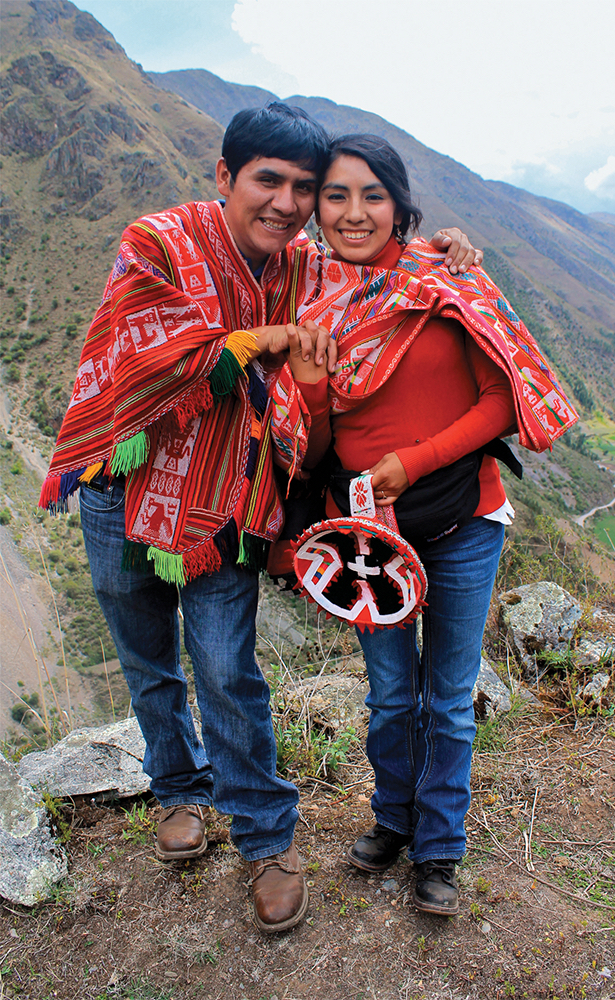
Ojeda and Tairo both grew up in homes where Runasimi was spoken. Runasimi, literally “language of people,” is the Quechua term for the language they speak. Ojeda is a native speaker. Quechua was his first language and is the language he spoke at home, growing up in the Apurimac region. Tairo is a heritage speaker. Quechua was not her first language, but it is the language she used to communicate with her grandparents. “I remember since very young that my parents spoke Quechua at home only when they wanted to hide something from us,” she recalled. In our wide-ranging conversation, I learned that there are multiple varieties of Quechua spoken in Peru (and beyond), and while some are quite mutually intelligible despite differences in vocabulary and pronunciation, others are not so much.
The first Quechua grammar was written in 1560 by Fray Domingo de Santo Tomás for the purpose of indoctrinating Indigenous Andeans in the Catholic faith. Quechua is considered an official language of Peru, along with Spanish. But Ojeda and Tairo explain that there are enormous barriers to becoming fully literate in the language. For example, it is taught to schoolchildren in rural areas, but only until the end of elementary school. In urban and semi-rural areas, Quechua is not taught in schools at all.
As a married couple, Ojeda and Tairo communicate with each other in both Quechua and Spanish. They met as undergraduate students at Universidad Nacional de San Antonio Abad in Cusco, life-changing years for them both. Below, they discuss the significance of Quechua in their lives and what it means to them to bring this Indigenous language to students at UT Austin and beyond. They pursued master’s degrees at Pontificia Universidad Católica de Lima. Tairo earned an additional master’s at Universidad EAFIT in Colombia. (Answers to the questions have been edited and condensed; Katherin Tairo’s answers have been translated from the original Spanish.)
Ojeda: I am a Quechua scholar and activist, member of a Quechua community in the Apurimac region of Peru. My research is in the field of Indigenous media, particularly among Quechua Indigenous people in the Andes of South America. I teach Quechua and Spanish language at UT. Every summer, as part of the activities of the organization Quechua Tinkuy (Quechua Encounter), I and others teach Quechua language and culture in an open-access course. In 2018 and 2019, I taught Quechua at the University of Delaware as part of the program of Foreign Language Teaching Assistant of the Fulbright Commission. My BA degree is in journalism and my MA is in public policy.1
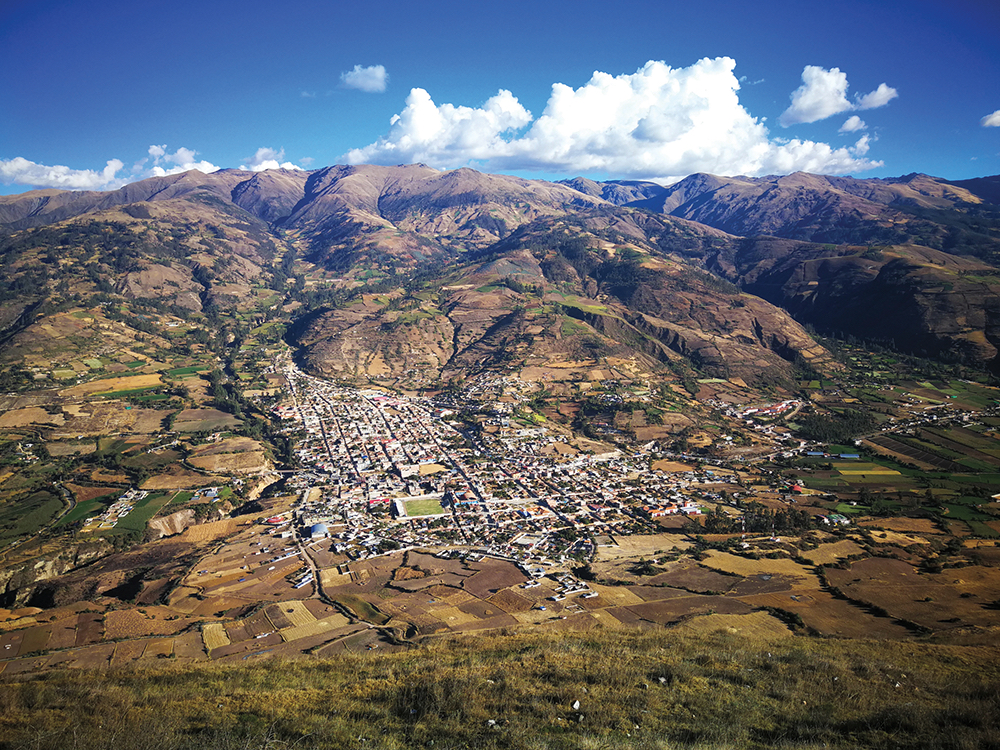
Tairo: I was born and grew up in Sicuani, Cusco, a community whose population is primarily Quechua. I had to leave my village to study communication sciences at the Universidad Nacional de San Antonio Abad in Cusco, where I was a member of the Asociación de Estudiantes Indígenas “Hatun Ñan.” I later obtained master’s degrees in public policy and management of socially responsive businesses. My work experience has involved social development in Indigenous Quechua and Amazonian populations, and my academic experience is related to the study of communication, rural development, and management of social programs and projects in the Andes. Now, as a LLILAS doctoral student, I focus on Indigenous peoples, public policy, and the notion of sumaq kausay (well-being) in the Andes.
Please talk about how you learned Quechua as a child. Was it your first language or the language spoken in your home?
Ojeda: Quechua is spoken at home, and it is my first language. My parents, grandparents, and my community use Quechua language as their primary means of communication.
Tairo: I consider myself a heritage speaker of Quechua, although my parents didn’t teach me Quechua at home due to the stigma and discrimination against Quechua speakers. I learned the language from my grandparents and family members. My first language was Spanish.
Was Quechua taught in your school when you were a child?
Ojeda: No, the use of the language was prohibited in my school. There is a governmental program, Educación Intercultural Bilingüe (EBI), that teaches in Quechua during the first years of primary school, but only in some rural schools. When I studied, my school was not included within the EBI. This situation is deeply affecting to many Quechua speakers like me who do not have the opportunity to be educated in our native language.
Tairo: Unfortunately, no. My elementary school education was completely in Spanish even though the majority of the students were from agricultural communities where Quechua is the primary language. The Peruvian government’s public policy of bilingual intercultural education doesn’t consider all of the rural schools as Quechua. This is also due to the colonial education system, which prioritizes mestizaje.2
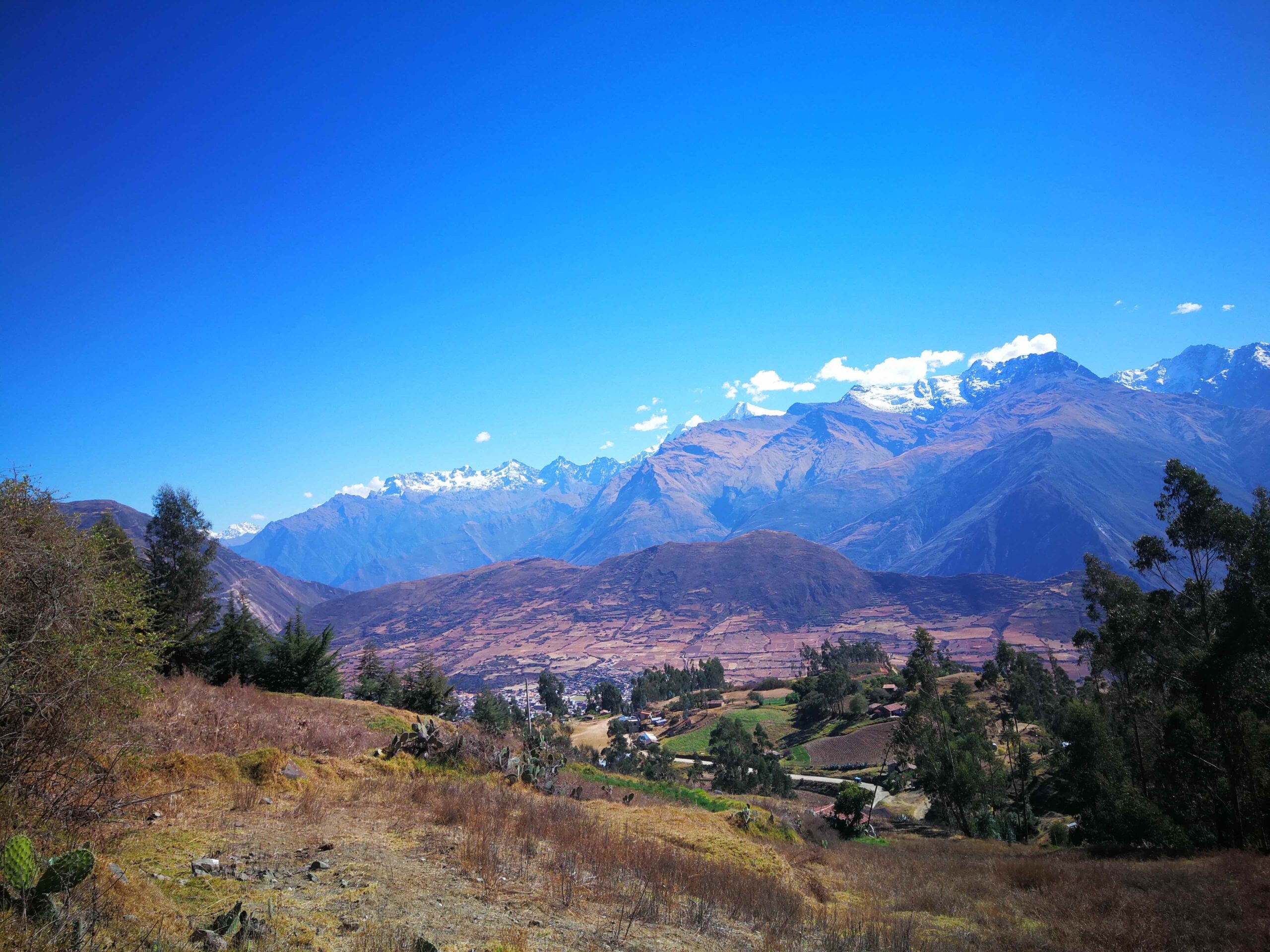
When you were growing up, how did you feel about speaking Quechua, and how was it regarded in your community? Was it a source of pride? Was it ever a source of conflict or discrimination for you?
Ojeda: When I was growing up, Quechua was used only at home and in my community, not in public spaces such as schools. Still now, speaking Quechua means lack of formal education and indigeneity. For that reason, speakers avoid using it publicly. It is a source of conflict, because in my country we have systemic racism and discrimination. Now, many Quechuas like me are promoting the use of our native language in public space. Our main way is through social media and academic spaces. I feel very proud promoting and teaching my native language. Quechuas in Peru, as well as neighboring countries, are now less ashamed because our culture is part of this movement that values and supports the public use of our language.
Tairo: Growing up, I mostly used Quechua to communicate with my grandparents. In my community, Quechua was the primordial means of communication. Nevertheless, my parents’ generation didn’t teach it to their kids out of fear that we would suffer the same discrimination that they suffered. Speaking Quechua in public still presents conflicts of exclusion and racialization, especially for Andean people.
In your opinion, what is the significance or importance of teaching Quechua? Of teaching/learning Indigenous languages in general?
Ojeda: The significance of teaching Quechua at UT and other U.S. universities is that is makes visible the language of the Indigenous Quechua people. Students in the course explore and understand better the contemporary presence of millions of Quechuas in what is currently known as South America.3 It has more relevance when the opportunity to teach the language is in the hands of Indigenous people who are native speakers of Quechua.
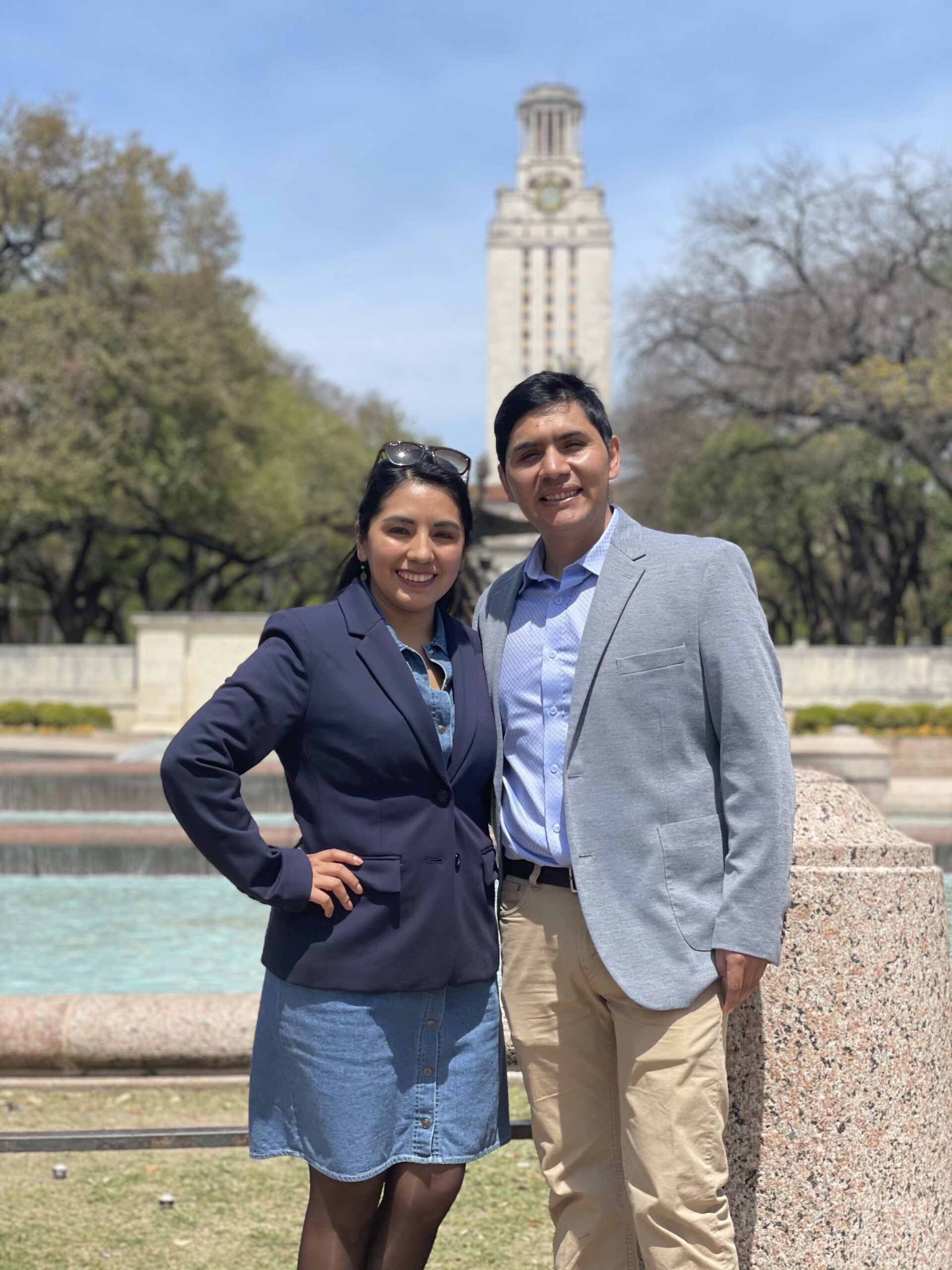
Tairo: I am currently working on the development of a Quechua curriculum as an open-access online tool, and this makes me proud. It is definitely very important since it not only makes visible Andean language and culture, but also revitalizes the language. Indigenous languages in general are being affected by a colonial system that doesn’t value Indigenous knowledge and culture; for this reason we need decolonization and revitalization of the Quechua language.
What has the reception of your students been like?
Ojeda: My students were very interested in learning about the Andes and its people. They were very motivated in learning and practicing Quechua because their academic interests are linked with Indigenous people of the Andes. Some of them have had contact with Quechua people before the class; with me, they had the opportunity to learn Quechua people’s language and culture. For some, this was their first time having contact with a Quechua person as an instructor. For them, learning about Indigenous people was completely new and it changed their perspective about Quechuas and other people and cultures different from their own.
What does it mean to you that Quechua is taught at the University of Texas?
Ojeda: For me, it means an opportunity to show and teach my language and culture to students at UT, and it is important for me that, so far from my home country, I am teaching my language and culture. Quechua people historically are discriminated against in my home country. For that reason, the opportunity of teaching my language at UT means a lot to me.
Tairo: The fact that Quechua is taught at UT is very important to revitalize the language. When I have the opportunity to speak with members of my community, I tell them that there are non-Quechua people in other countries who are also learning the language and are interested in learning about our culture. This surprises people and makes them want to reassess the value of what is ours.
Ma timomachtican nahuatl: Eduardo de la Cruz Cruz
After a hiatus of several years, the Indigenous Languages Initiative is thrilled to announce the return of in-person classes in Nahuatl. We welcome instructor Eduardo de la Cruz Cruz, whose extensive experience includes teaching Nahuatl for Brown University, Stanford, UCLA, Yale, and the Universities of Chicago, Michigan, and Utah. De la Cruz is director of Instituto de Docencia e Investigación Etnológica de Zacatecas (IDIEZ), a nonprofit organization dedicated to teaching and research of Nahuatl language and culture. He holds a bachelor’s in economics and a master’s in humanistic and educational research from Universidad Autónoma de Zacatecas, where he wrote his master’s thesis in his native Nahuatl. De la Cruz is the author of numerous works in Nahuatl and Spanish, and was a contributor to the first monolingual dictionary of Huastecan Nahuatl, Tlahtolxitlauhcayotl, published in 2016. He is currently a doctoral candidate in the School of Liberal Arts, University of Warsaw (Poland).
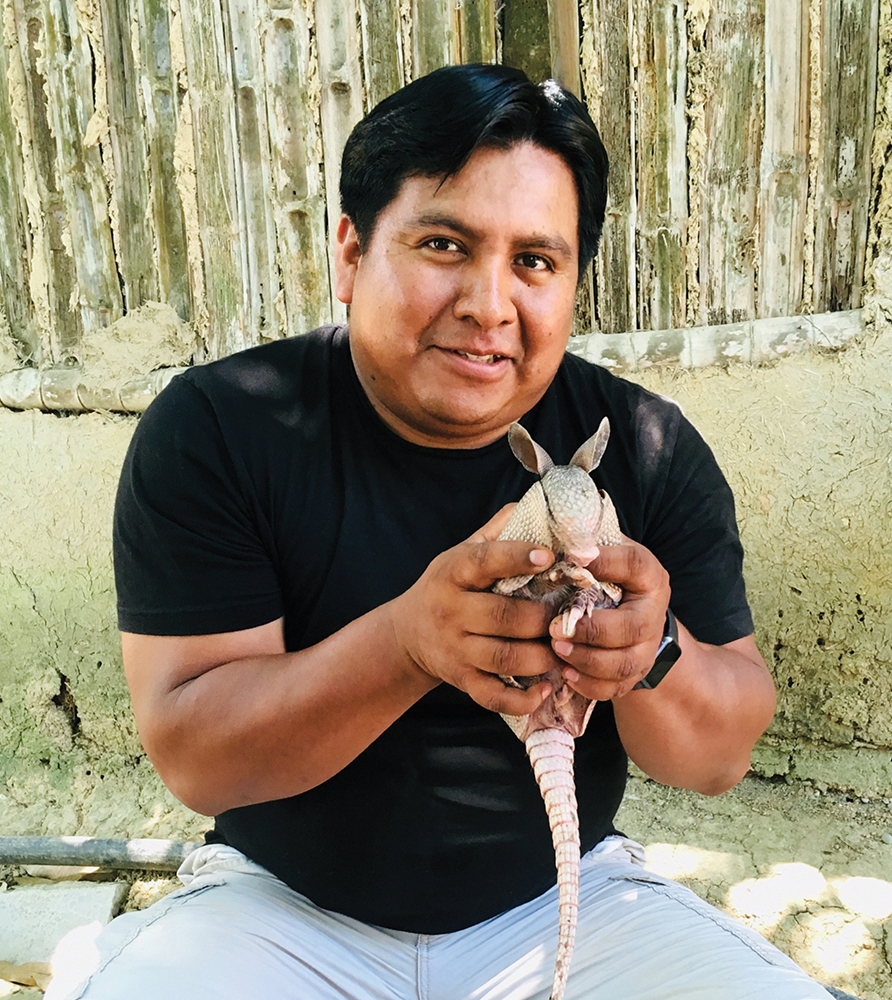
“Nahuatl is one of the most widely spoken and best-documented Indigenous languages in the Americas,” says Professor Kelly McDonough, who is the author of a book on Nahua intellectuals. She explains: “When Spanish clergy arrived in Mesoamerica in the sixteenth century, they created boarding schools for the sons of noble Indigenous families. There, the young men were instructed in Christianity and European customs. As part of their training, they were taught to write with the Roman alphabet in their own language as well as Latin and Castilian.” Since that time, McDonough writes, “Nahuas have maintained a deep engagement with the written word as one of the vehicles for their intellectual work.” McDonough emphasizes, though, that “the written word is only one facet of Indigenous knowledge production; there is also oral, visual, and embodied communication.” In a conversation via e-mail, Eduardo de la Cruz Cruz echoes this in the way he discusses the role of Nahuatl in his life, and his approach to teaching. He invites us to study Nahuatl with the words “Ma timomachtican nahuatl.” (Answers have been translated from the Spanish and condensed.)
I was born in a little village, Lindero Tecomate, in Chicontepec, Veracruz, Mexico. I did all of my early schooling there. I was raised by my parents, and among my grandparents and the people in my community, and grew up experiencing the ceremonial practices of our community. From the age of seven, I participated in trips to the agricultural fields—la milpa. There, working with grownups and elders, I heard tales of ancestors, of ceremonies, of the significance of keeping certain traditions. I didn’t interact much with children my age since I preferred working with people in the fields. After finishing high school (telebachillerato) in my community, I left for Guadalajara in 2004 to work and save money in order to continue my studies.
How did you learn Nahuatl as a child? Was it spoken at home?
Nahuatl was my first language. I learned it with my parents at home; it was the only language in which they spoke to me. The values they taught me were always expressed in Nahuatl. They nourished me with learning, with knowledge about agricultural practices and their importance; it was a whole informal education. Thanks to this, and to their advice, I was able to enroll in the university. My second language is Spanish, which I mostly learned in elementary school. That had its challenges, because it bothered the teachers that we spoke Nahuatl at school, and it bothered them even more that we spoke it in the classroom.

Was Nahuatl taught in school when you were a child?
No. It was not taught in schools. On the contrary, the teachers said that to continue speaking Nahuatl was an obstacle, and that we would never leave the village to find other opportunities in the cities, or seek better living conditions, or have the opportunity to enroll in a university.
What was your attitude toward Nahuatl during your childhood? What was the attitude in your community? Was it a source of pride? At any point was it a source of conflict or discrimination for you?
My attitude toward Nahuatl is very positive. Thanks to evidence in [pre-Columbian] Nahua codices, we understand a lot about our ancestors, such as their forms of social organization, their economy, traditional medicine; some of these things still exist. This is my point of view, and the attitude that I have toward the language. However, before attending university, it was the opposite. I didn’t even have the idea of working with my mother tongue, Nahuatl, or teaching and researching the culture and language. Membership in the Nahua community was, and continues to be, an obstacle to children’s ability to develop in the academic atmosphere. This is because there were spaces in which I was discriminated against for being a Nahuatl speaker. I felt that educational opportunities for rural children and youth were not the same as those for students in larger cities, even less so for Indigenous youth. Now that I am a teacher, I see that teaching Nahuatl is an aspect of revitalization, and as a teacher I design my own materials and publish them so that there will be more resources, and so that these resources are accessible to Nahuatl-speaking communities.
What is the significance of teaching Nahuatl? Of teaching and learning Indigenous languages in general?
For me, teaching Nahuatl is very important not only because it means someone is learning to communicate in the language, but because I am helping to create a feeling for Nahua communities and making Nahuatl visible, showing that one can study Nahuatl like any other language. Learning an Indigenous language allows us to have a different view of the world, one in which we can understand in detail the phenomena of a certain ethnic group. One frequently studies a language and observes a culture from the outside, but to learn a language and interact with its native speakers, to participate in and practice its customs, allows us to understand it from within.
The teaching of Indigenous languages can be seen as a rescue mission to keep them from disappearing in the future. It is better to expand the language with both native and non-native speakers, create records of academic and nonacademic work. It happens to be that Indigenous languages are more studied by foreigners than by those from within the language’s region of origin.
How do you feel about beginning your work as an instructor of Nahuatl at UT Austin?
It will be my first time to teach in person at a university. I teach the language, the basis of customs—what the sowing of corn is like, the carnaval dance of the Huasteca region. I’m very happy and excited to share Nahuatl—the language and the culture.
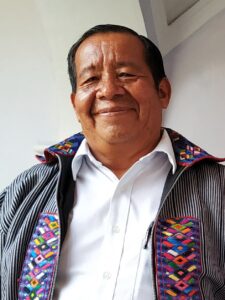
Editor’s note: K’iche’ Maya was taught in person at LLILAS by Don Manuel Tahay, aka Tat Wel, a generous and beloved scholar and teacher. As this issue of Portal went to press, we learned, with great sadness, that Manuel Tahay died of COVID in Guatemala. Read the memorial article on Tahay’s invaluable contributions to his students, family, and community. Currently, a free online K’iche’ course for beginner to advanced students is hosted by COERLL at tzij.coerll.utexas.edu.
Kelly McDonough is an associate professor in the Department of Spanish and Portuguese and the director of the LLILAS Benson Indigenous Languages Initiative. She is the author of The Learned Ones: Nahua Intellectuals in Postconquest Mexico (2014).
Susanna Sharpe is communications coordinator at LLILAS Benson and the editor of Portal magazine.
Notes
1. “Public policy” is Ojeda’s suggested translation for gerenciasocial (literally, social management), a degree in which students are trained in planning, managing, and providing leadership that supports economic development through projects that benefit communities.
2. McDonough notes: “Mestizaje is in theory a melding of Indigenous and non-Indigenous cultures, but in practice values assimilation to non-Indigenous cultural norms.”
3. Indigenous scholars and activists also use the term Abiayala, from the Guna language, to refer to South America and/or the Americas as a whole. Guna, part of the Chibchan language group, is spoken by Indigenous people in present-day Panama and Colombia.
